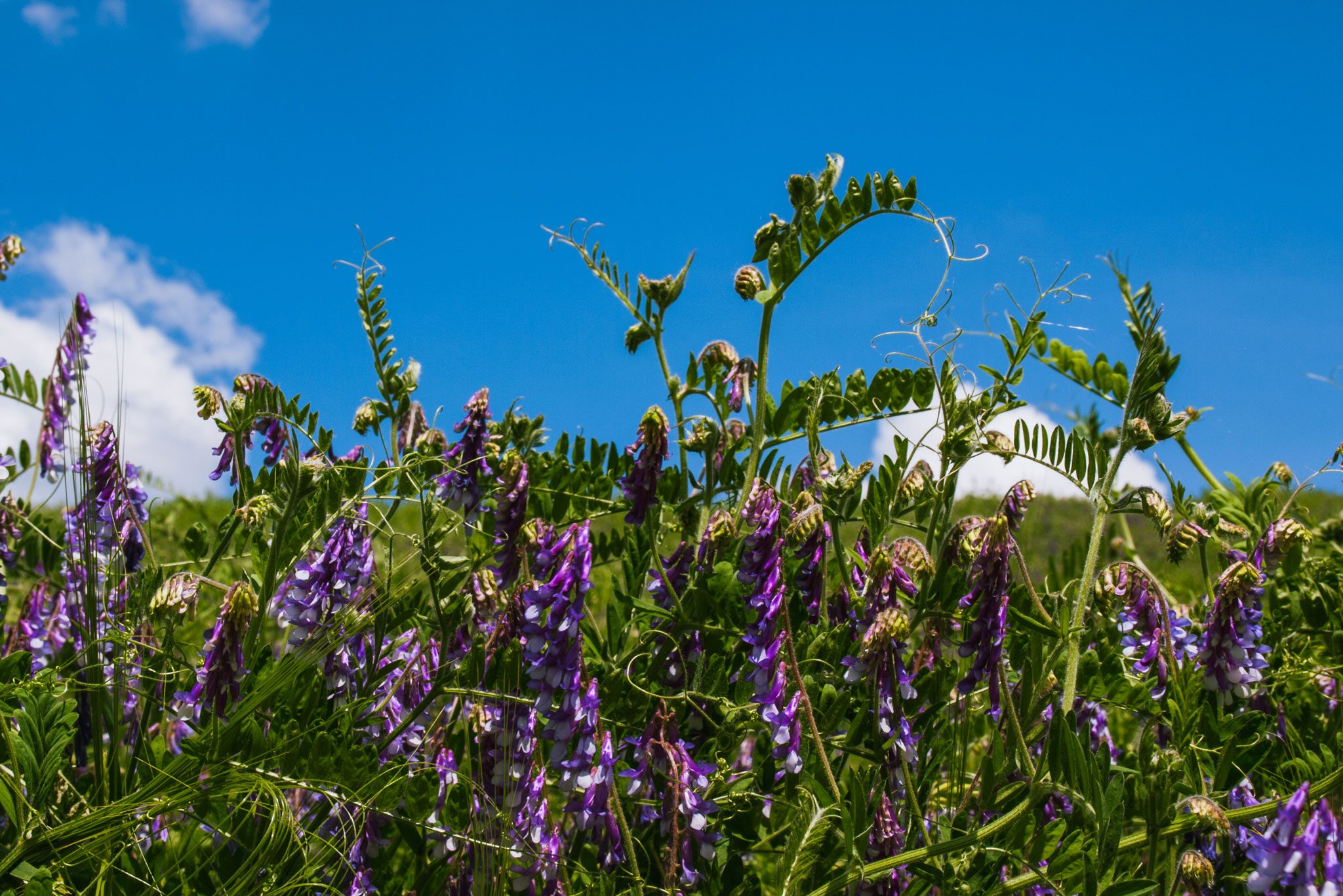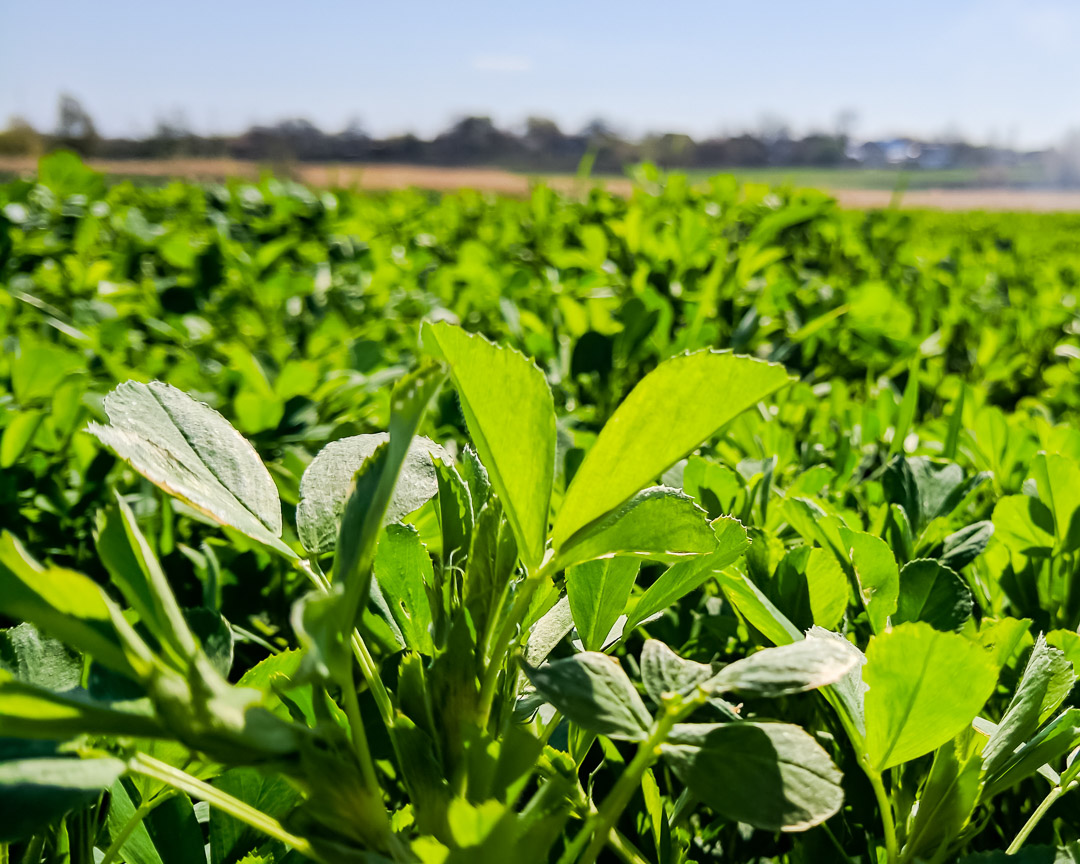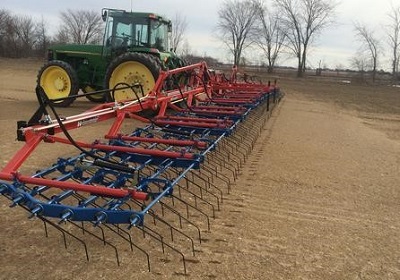- Published On: February 9, 2021
- Author: Bryce Irlbeck
We put a lot of emphasis on the transition period with organic row crops. After all, a smart transition will set you up for long term success. But a poor one? That could result in out-of-control weeds, depletion of your soil’s nutrients, and a tough road to profitability. Luckily, an organic transition with alfalfa can make the process a little smoother.
Why is alfalfa such an excellent crop for transitioning to organic production? Let’s discuss.
1. A transition with alfalfa reduces weeds
Even under conventional farming practices, weeds can be challenging. Now try to fight them without chemicals, using only agronomic practices and equipment you may have never operated before. It’s understandable why weed control is one of the biggest concerns new organic farmers face.
But a transition with alfalfa goes a long way to help take care of weeds. For one, its large biomass and allelopathic effects suppress weeds. And because it gets clipped every 30 days, any weeds that sprout up get mowed with it. Alfalfa can help provide that much needed clean field for first-year organic corn.
2. A transition with alfalfa benefits the soil
Not only does alfalfa suppress weeds, it also contributes nitrogen to the soil. According to the University of Nebraska-Lincoln, the legume can provide a nitrogen credit of 40 to 150 pounds per acre after termination, depending on your soil type and the alfalfa plant stand.
3. Alfalfa has a true market
Unlike corn and soybeans, alfalfa is one crop the government doesn’t meddle in. There’s no border trade, so hedge funds can’t manipulate the prices. Its not subject to a variety of external factors that you can’t control/understand, so alfalfa maintains a market driven by supply and demand.
This means that prices are usually lower in a good weather year, while in dry years, they’re higher. But overall, alfalfa’s economics are pretty solid, and there’s usually a reasonable profit margin for it.
What it takes to succeed with alfalfa in your rotation
While there are compelling reasons to include alfalfa in your transition rotation, it’s not a fit for every farm. Here are a few questions to ask yourself to determine if it could work for your operation.
Is there a market for your alfalfa?
Alfalfa’s end users are typically livestock operations: dairy cows, beef cattle, chickens, horses — pretty much any livestock animal but hogs. You can also sell it for pet food. As a result, the market is very localized and you’ll have to see if there’s a market for it in your area.
If you do find a market, be sure to fully understand what the market is willing to buy. Dairy farms need high-quality alfalfa, and it takes a lot of management to achieve that quality. Our advice to growers new to alfalfa is to look elsewhere. Other buyers, like horse owners, might care more about volume than quality.
Another important factor is that it can take 2 -3 years to build working relationships with end-users. Make contact with as many people as possible and tell them what you’re doing. And don’t forget to consider the end product, especially in light of your management style. Are you going after quality or quantity?
Can I afford the investment to transition with alfalfa?
If you haven’t grown alfalfa before, you’ll need to invest in equipment to grow it or you’ll have to hire it out. You’ll need a mower conditioner, a baler, and a tractor to load the bales as well as something that can pick up the bales. These new pieces can cost you a total of $100,000 or more.
The first year of alfalfa is primarily for establishing growth. You won’t get as much production off of it as you will in your second year.
This means alfalfa can result in a $150-$200 per acre loss in the first year of transitioning. It is absolutely critical to remember, though, that this economic loss will be offset by agronomic benefits like weed control. You’ll typically breakeven the second year. But the point is you must be able to withstand the financial loss in the first year.
You also need to understand that alfalfa doesn’t operate like other grain markets and you probably won’t get paid quickly. With alfalfa, you need to test its quality then market and deliver it, and you’re often waiting 15-30 days for payment. Make sure your cash flow can handle the delay.
Can I manage the transition with alfalfa?
The good news is that managing the transition with alfalfa isn’t difficult. However, it does take a lot of effort during the summer when you’re taking cuttings. You need to understand what it costs to run the equipment and make sure you have the time and labor available to manage the crop. On B&B Irlbeck Farms, we hire a lot of our alfalfa work out so we can focus on organic corn, as that’s the crop we grow best.
The MyFarm platform can help plan out field activities for alfalfa and ensure you have the labor and equipment capacity to add it to your rotation.
What if alfalfa isn’t the right crop for my transition rotation?
First, keep in mind that you don’t have to use alfalfa on all of your acres. Put in as much as you feel comfortable with, especially if you’re going to sell it for a lower price. When we transitioned B&B Irlbeck Farms, we put alfalfa on 10-20% of our acres.
If you find you don’t have the financial or labor investments to include it, or maybe there’s not a reliable market in your area, don’t fret. With the rise in commodity prices, it can make sense to transition with corn and soybeans, as well as wheat or other small grains.
AgriSecure can help
If you’re struggling to determine what would be the best rotation for your transition, AgriSecure can help. Contact us today to learn which crops can give you the best start to a future in organics.
By Bryce Irlbeck, AgriSecure Founder and Owner of B&B Irlbeck Farms
Related Articles
-
Cover Crops Bring Big Benefits to Organic Farms
We always stress the importance of a diverse crop rotation to achieve long-term organic success. But what if market opportunities for organic crops in your area are limited? How can you diversify your rotation with just a few cash crops? Answer: Cover crops. Even though you don’t sell them like cash crops, they can still […]
-
4 Keys to Choosing and Using Organic Crop Inputs
Growers understand that switching from a conventional farming system to organic means giving up certain products like genetically modified seed and synthetic herbicides. But that doesn’t mean organic farmers do not have crop input options. In fact, aside from nitrogen fertilizers and herbicides, most conventional inputs can be found in organic forms, and through use […]
-
7 Tips for Success After Organic Transition
It’s been 36 months since you started the transition process, and now you’re entering your first growing season as a certified organic farmer. While this means finally being able to reap those high premiums, it also means that any mistakes made are going to cost more. By following these 7 tips, you can reduce the […]
-
AgriSecure Shares Transition Tips at Minnesota Organic Conference
AgriSecure account executives Kenn Jenkins and Pete Kapustka will share the company’s perspective on how to manage the transition process into organic production at the 2020 Minnesota Organic Conference. Becoming an organic grower requires a field not having any prohibited substance or genetically modified crops on it for 36 months, and that time period can […]
-
Long-Term Organic Success = Rotation, Rotation, Rotation
You’ve heard the saying, “location, location, location.” The real estate mantra is used to remind people that where a property is located is often the most important factor in its value. In organic farming, the same can be said about rotation. Having the right rotation in place is critical for year-to-year success and the long-term […]
-
5 Critical Factors for Weed Control in Organic Row Crops
If you’re new to organic production, or are considering it, one of the biggest concerns you probably have is weed control. Without the use of herbicides, you may be wondering whether weed control is even possible. While it does take a higher level of management, weed control in organic systems is possible. And you can […]
-
4 Keys to Early Season Organic Success
Given how often things change in farming, some consider plans to be obsolete. But for large-scale organic producers, developing a plan is key to avoiding pain points that can hurt your bottom line. And when things change, as they often do, a plan can help determine your next best course of action. To develop an […]
-
AgriSecure Hosting Organic Field Day
AgriSecure is hosting an Organic Field Day near Manning, Iowa, on June 28, 2019. The event will cover how a diverse cropping rotation can deliver both economic and agronomic benefits to transitioning and organic row crop farms in the Midwest. Bryce Irlbeck, AgriSecure Founder and Owner of B&B Irlbeck Farms, will review how crops such […]
Get in the know
Our newsletter, it’s a quick read. You’ll get industry news plus all the latest organic insights. Who doesn’t want that?









